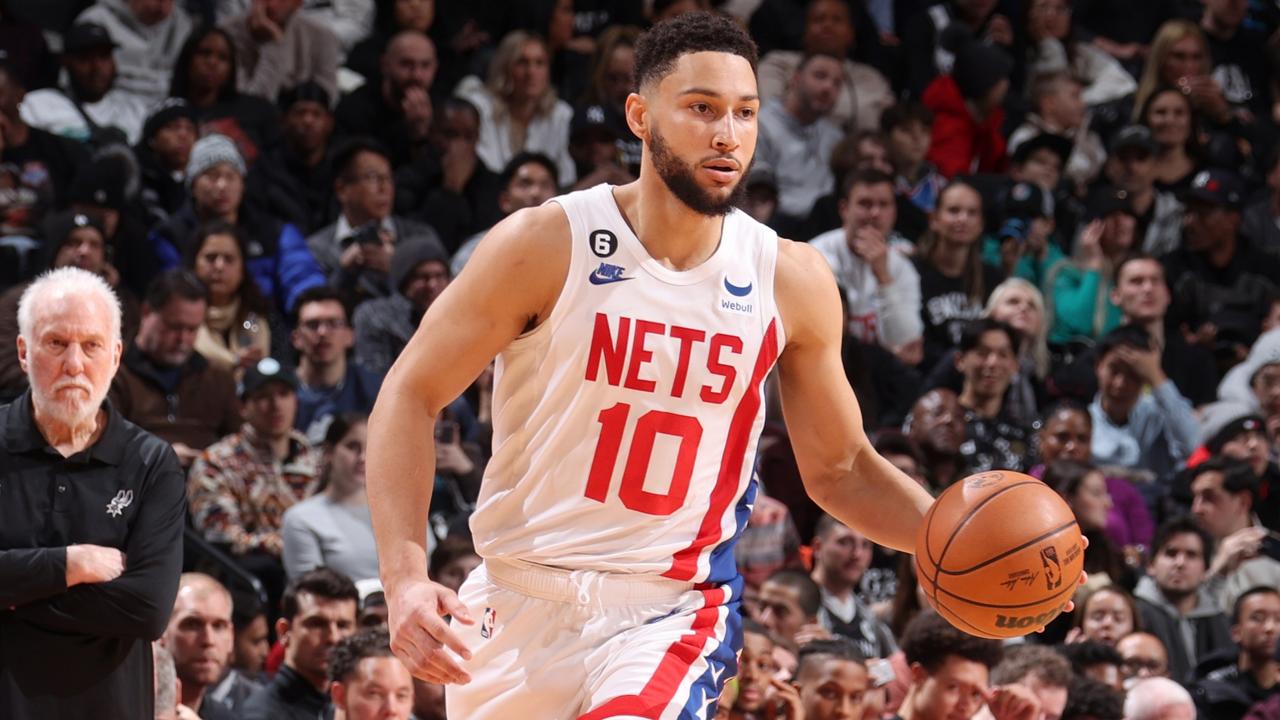A rule book loophole has led to a strange new NBA tactic: not touching the ball as it rolls slowly up the court. It actually makes a difference, writes ROBERT O’CONNELL.
One of the most athletic and dynamic players in the NBA was, for the moment, doing nothing. Ja Morant leaned over and grabbed his shorts, his sneakers a few inches away from the basketball that his teammate John Konchar had just inbounded — which is to say, had just dropped to the floor like keys on a countertop. Morant’s Memphis Grizzlies led the Charlotte Hornets by 29 points, late in the third quarter of an early-January game, and he was content to let the ball sit there as long as he could.
Twenty-six seconds of the game clock ticked by before a Hornets defender jogged into the back-court, forcing Morant to pick up the ball. Only then did the Grizzlies’ 24 seconds on the shot clock begin.
“You can do this. The ball hasn’t been touched,” Hornets broadcast announcer Eric Collins said with a laugh. “He theoretically could do this until midnight tonight.”
The NBA’s rule book has all sorts of carveouts that let canny teams shorten the game or lengthen it, shrink the floor or expand it. A late time-out advances the ball upcourt, the “Hack-a-Shaq” tactic freezes the clock.
The practice takes advantage of a quirk of timekeeping. Before the final minute of the first, second and third quarters — and before the last two minutes of the fourth quarter and any overtime periods — the game clock keeps running after a made field goal, but the shot clock waits until a player touches the ball. A team holding a lead can therefore whittle away time for as long as the opponent does not force it to pick up the ball.
In the case of Morant’s lollygagging against the Hornets, the gambit served next to no strategic purpose, given the size of the Grizzlies’ lead. But Pat McFarlane, a quantitative analyst for the Philadelphia Phillies who moonlights running NBA numbers at his blog Basketball Relativity, has found that in certain cases the strategy — which he shorthands to “bleeding the clock” or BTC — can pay real dividends.
“The magnitude of the impact of the technique increases as the game gets later and later,” McFarlane said. “When it gets down to a score margin between three and seven, and it’s late in the game, that’s when you see these swings of 2% or 3% win expectancy.”
In October, the Boston Celtics — the headiest BTC users, per McFarlane’s study — held a five-point lead over the Miami Heat with just over four minutes left. As the Heat set their defense on the other end of the floor, the Celtics dawdled 14 seconds away with the ball sitting at point guard Marcus Smart’s feet. According to McFarlane’s calculations, the time that elapsed in that possession, which lasted 23 seconds overall, created a 1.7% boost in their win expectancy. Boston would go on to win by seven.
The only problem with the technique is the relative ease of defending against it; all the opposing team needs to do is send a player into the back-court. That countermeasure, though, causes further inconveniences that an alert offense can take advantage of.
Jarell Christian, the general manager of the Celtics’ G League affiliate who also works on player development with the NBA club, described the rolling of the ball as either a respite or a trap. If defenses lie back, time ticks down. If they come forward, the Celtics’ guards can use the full 94-foot length of the court to get a step. “Once that defender bolts into the back-court, we can get a numbers advantage,” Christian said. “It’s almost like a fast break.”
Late in a December game against the Toronto Raptors, Boston broke out a modified BTC technique, stationing a screener to ward off the defense while Smart waddled with his feet to either side of the ball. When Toronto’s Gary Trent Jr. finally broke through and forced him to pick it up, Smart drove hard into the frontcourt. The resulting advantage — a scrambling defense unprepared to deal with an early screen — led to a quick 3-pointer for Smart’s teammate Jaylen Brown.
Bleeding the clock derives, oddly enough, from a tactic designed to preserve as much time as possible. In late-quarter situations when neither the game clock nor the shot clock starts until a player touches the ball, guards often have their teammates roll the ball upcourt in the hopes that they might make it past the midcourt stripe before having to start the timer. McFarlane said BTC also belongs to a cross-sport lineage of loophole-hunting, citing a 2006 college football game in which Wisconsin repeatedly ran offsides on kick-offs, incurring penalties to work away the final seconds before halftime.
What differentiates the NBA’s latest fad, and what McFarlane acknowledges his numbers don’t account for, is the sheer nuisance of it. A team trying for a comeback, having scored a needed bucket and running back to set its defense, has to make its way back up the floor again. In another recent Boston game, Denver forward Aaron Gordon simply bashed his way into a Celtic screening the ball, earning a flagrant foul. “The gamesmanship part of it is real,” McFarlane said. “I think it really gets under people’s skin.”
In letting the ball sit against Charlotte, with that 29-point lead, Morant may have been thinking on a scale bigger than that particular game, sowing seeds for a future countermove. Early in this season, Morant baited Brooklyn’s Ben Simmons into a back-court foul — a triumph he credited to studying Simmons’s habits in a similar situation years earlier.
On that previous BTC attempt, Simmons had charged at the ball, swept it up before Morant could react and raced for a dunk. This time, Morant coaxed Simmons out to the midcourt line, far away from any help defense. When Morant snatched up the ball, he quickly drew a sixth foul from a visibly annoyed Simmons, disqualifying one of Brooklyn’s most effective defenders.
“My rookie year it was in Philly, the same situation happened like that versus Ben,” Morant said after the game. This time, he added, “I knew I had him.”
-Wall Street Journal
.





